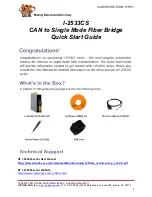
13.2 Fault Classifications
Faults have been classified into a number of categories according to the severity of the failure. The PGM
behavior when a failure is detected is determined by type of fault and whether the PGM is non-redundant, or is
one of a redundant controller pair.
The following table identifies these fault classifications and describes PGM behavior in response to the fault
type.
Fault Classification
Characteristics
Hard Failure
Failure detected by hardware; operation cannot continue. If the fault does not
prevent software processing the problem, the affected node will be rebooted
under software control into the FAIL State.
•
If failure occurs on a primary module, it triggers a switchover to the
synchronized secondary module.
•
If failure occurs on a secondary module, it results in loss of
synchronization and reduced availability until the problem is resolved.
•
If failure occurs on a non-redundant module, it results in loss of control
and loss of view.
Severe Failure
Failure detected by software; operation cannot continue. The affected node
will be rebooted under software control into the FAIL State.
•
Severe failure on a synchronized primary module triggers a switchover to
the secondary module.
•
Severe failure on a secondary module causes a loss-of-synchronization
(and reduced availability until fault is corrected).
•
Severe failure on a non-redundant module causes a loss-of-control and
loss-of-view.
Soft Failure
Failure detected by software; operation continues with full control and full
view. Soft failures are alarmed to the operator. FTE will be monitored by the
FTE System Management Tool.
•
If failure occurs on a primary module, it does not trigger a switchover to
the synchronized secondary module.
•
If failure occurs on a secondary module, it does not result in loss of
synchronization.
•
If failure occurs on a non-redundant module, it does not result in loss of
control and loss of view.
Installation/Startup Failure
Detected by software. Module may not become operational.
•
This failure does not apply to the synchronized primary module, since
installation and startup must be successful to reach synchronized primary
state.
•
If failure occurs on a secondary module, it results in the inability to
complete the initial synchronization and to view the node on the network.
•
If failure occurs on a non-redundant module, it results in an inability to
commence control and to view the module on the network.
Communication Failure
Communication errors between peer modules and/or I/O devices, including
Fault Tolerant Ethernet Bridge (FTEB), do not cause any module state
change.
13 PROFIBUS GATEWAY MODULE (PGM) TROUBLESHOOTING
253
Summary of Contents for Experion PKS
Page 1: ...Experion PKS PROFIBUS Gateway Module User s Guide EPDOC XX88 en 431E June 2018 Release 431 ...
Page 8: ...CONTENTS 8 www honeywell com ...
Page 10: ...1 ABOUT THIS GUIDE 10 www honeywell com ...
Page 32: ...4 PROFIBUS GATEWAY MODULE PGM INSTALLATION 32 www honeywell com ...
Page 58: ...5 PROFIBUS GATEWAY MODULE PGM BLOCK 58 www honeywell com ...
Page 69: ...6 PROTOCOL BLOCK 69 ...
Page 103: ...5 Click OK 6 PROTOCOL BLOCK 103 ...
Page 110: ...6 PROTOCOL BLOCK 110 www honeywell com ...
Page 183: ...PDC Details tab Figure 6 Detail Display of PDC Details tab 7 DEVICE SUPPORT BLOCK DSB 183 ...
Page 186: ...7 DEVICE SUPPORT BLOCK DSB 186 www honeywell com ...
Page 231: ...9 PROFIBUS I O MODULE PIOMB FUNCTION BLOCK 231 ...
Page 232: ...9 PROFIBUS I O MODULE PIOMB FUNCTION BLOCK 232 www honeywell com ...
Page 236: ...10 PROFIBUS GATEWAY MODULE PGM CONFIGURATION EXAMPLE 236 www honeywell com ...
Page 264: ...13 PROFIBUS GATEWAY MODULE PGM TROUBLESHOOTING 264 www honeywell com ...
















































